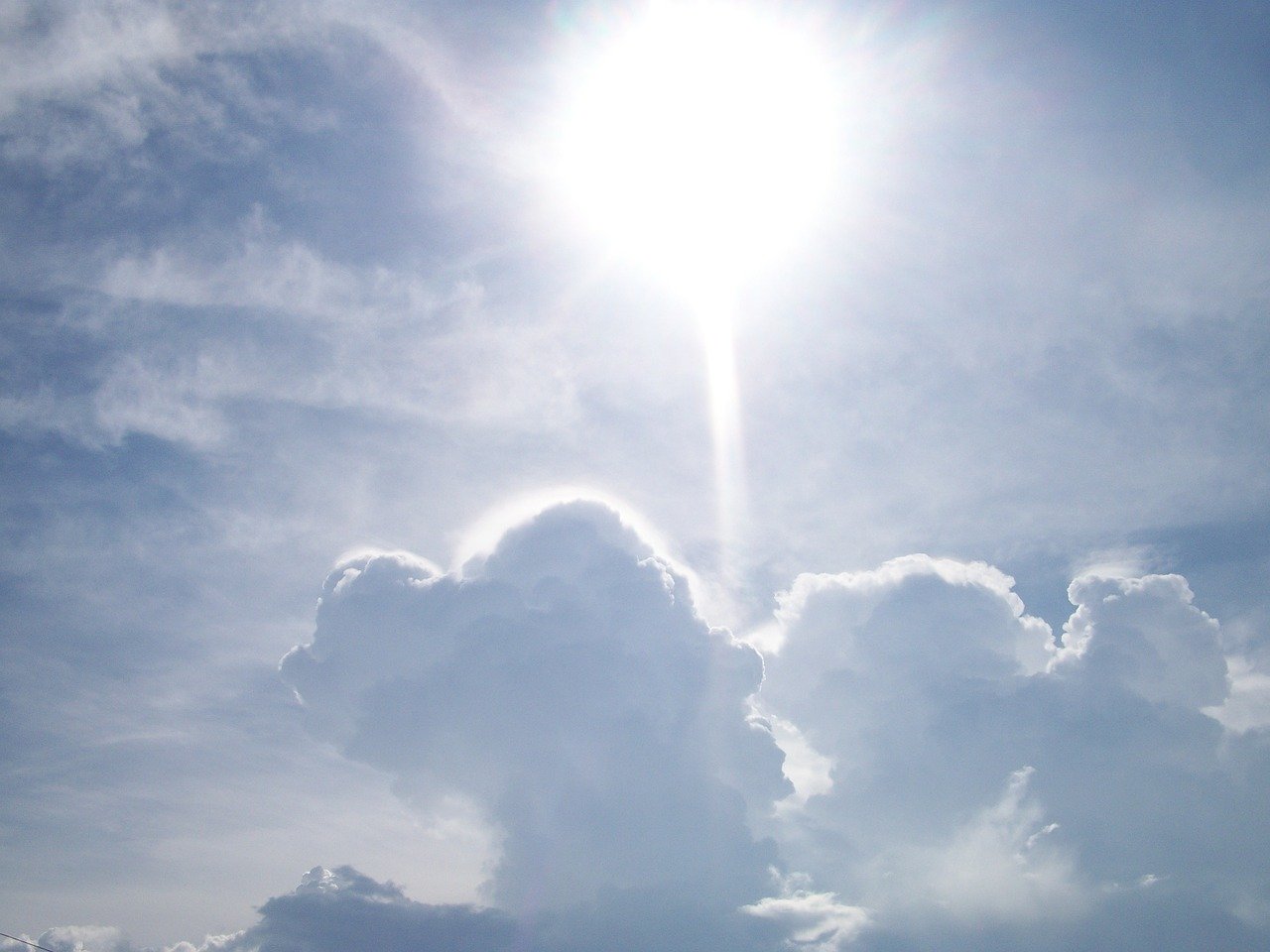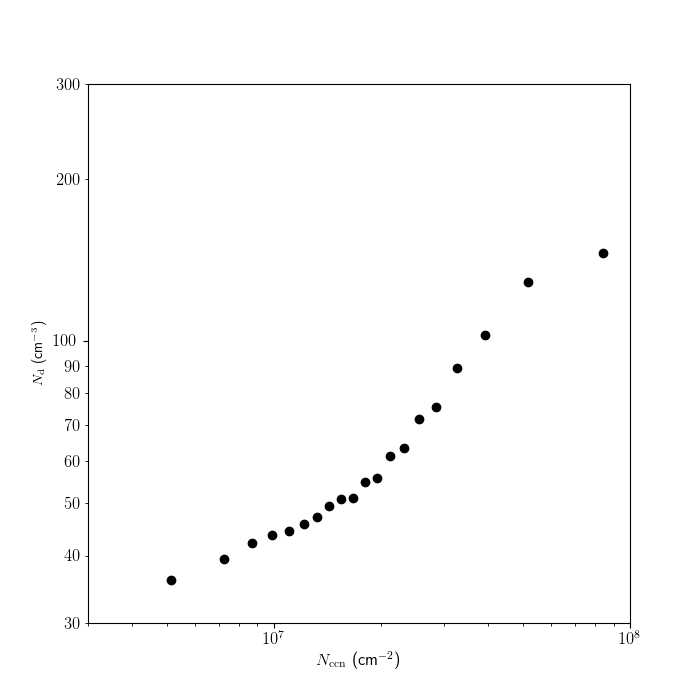De relatie tussen aerosolen (fijnstofdeeltjes) en hun afkoelende effect op aarde door middel van wolkenvorming is ruim twee keer zo sterk als tot dusver geschat. Omdat het aantal aerosolen zal gaan afnemen, zijn klimaatmodellen die een snellere opwarming van de aarde voorspellen waarschijnlijker.
(English follows Dutch)
Dat concludeert onderzoeker Otto Hasekamp van SRON Netherlands Institute for Space Research, die de resultaten publiceert in Nature Communications. Hij deed zijn onderzoek samen met Edward Gryspeerdt van het Imperial College Londen, en Johannes Quaas van de Universiteit van Leipzig.

Fijnstofdeeltjes in de lucht zorgen voor wolken die meer licht reflecteren dan wolken in een ‘schone’ atmosfeer, zo weten we sinds de jaren 70. Wolken in ‘vervuilde’ lucht bevatten meer waterdruppeltjes. Hun sterkere reflectie geeft een afkoelend effect op de aarde.

Geschikte deeltjes
Wolkendruppels ontstaan doordat water condenseert op een aerosol-deeltje. Dat de ene aerosol geschikter is dan de andere om als ‘condensatiekern’ te dienen is al een tijdje bekend uit laboratoriumwerk van collega’s.
De geschiktheid hangt af van de grootte van het deeltje en ook van hoe bolvormig het is. “Woestijnstofdeeltjes nemen bijvoorbeeld nauwelijks water op om wolkendruppeltjes te vormen, terwijl industrieel aerosol dat juist wel doet”, verduidelijkt Hasekamp. Hoe meer geschikte condensatiekernen er zijn in de atmosfeer, hoe meer wolkendruppeltjes er zullen zijn en hoe beter de zo gevormde wolk het licht kan reflecteren.
Nieuwe analysemethode
Eerder is ook met satellieten de relatie onderzocht tussen de hoeveelheid aerosolen en de hoeveelheid wolkwaterdruppeltjes. Het aantal condensatiekernen werd toen geschat door te meten in hoeverre licht door het aanwezig fijnstof wordt verzwakt. Dit leidde tot te zwakke schattingen van het effect van aerosol op wolken.
Hasekamp en zijn collega-onderzoekers gebruikten een nieuwe analysemethode van SRON, om uit bestaande satellietdata van de Franse satelliet POLDER ook de grootte en de vorm van aerosoldeeltjes af te leiden, naast de hoeveelheid, en dus ook hun geschiktheid als condensatiekern. Hiermee kregen de onderzoekers het verband tussen aerosolen en hun afkoelend effect nauwkeuriger in beeld.
Ruim twee keer zo sterk als geschat
“Het Intergovernmental Panel on Climate Change (IPCC) van de Verenigde Naties heeft in het IPCC Assessment Rapport-5 uit 2013 veel gewicht gegeven aan satelliet resultaten die een te zwak aerosol effect op wolken laten zien, terwijl veel modellen een sterker effect laten zien”, concludeert Hasekamp. “Wij denken dat het effect ruim twee keer zo sterk is als door het IPCC geschat.”
De verwachting is dat de uitstoot van fijnstof in de atmosfeer zal gaan afnemen. Hasekamp: “Dat betekent dat de temperatuur dus sneller zal stijgen, omdat de afkoeling deels wegvalt. Uit de verschillende klimaatvoorspellingen, zijn de voorspellingen op basis van pessimistische modellen die uitgaan van meer opwarming, waarschijnlijker.”
Nog nauwkeuriger met PACE/SPEXone
In de toekomst komen meer nauwkeurige metingen van aerosol vanuit de ruimte beschikbaar. Omdat POLDER alleen bruikbare metingen boven oceaan geeft, bevat de schatting van Hasekamp en collega’s nog steeds een grote onzekerheidsmarge. Het instrument SPEXone dat SRON samen met Airbus Defense & Space NL ontwikkelt voor op de NASA satelliet PACE, zal deze onzekerheidsmarge kunnen verkleinen door nauwkeurige metingen boven land te geven.
De onderzoekers publiceerden hun resultaten met de titel Analysis of polarimetric satellite measurements suggests stronger cooling due to aerosol-cloud interactions in Nature Communications.
Cooling role of particulate matter on warming Earth stronger than thought
The relationship between aerosols (particulate matter) and their cooling effect on the Earth due to the formation of clouds is more than twice as strong as was previously thought. As the amounts of aerosols will decrease, climate models that predict a faster warming of the Earth are more probable. These are the conclusions of researcher Otto Hasekamp from SRON Netherlands Institute for Space Research, who published the results in Nature Communications. He carried out his research together with Edward Gryspeerdt from Imperial College London, and Johannes Quaas from Leipzig University.

Since the 1970s, we have known that particulate matter in the air can give rise to clouds that reflect more light than clouds in a ‘clean’ atmosphere. Clouds in ‘polluted’ air contain more water droplets. Their stronger reflection has a cooling effect on the Earth.

Suitable particles
Water droplets arise when water condenses on aerosol particles. Thanks to the laboratory work of colleagues, it has already been known for some time that some aerosol particles are more suitable as ‘condensation nuclei’ than others. The suitability depends on the size of the particle as well as how spherical it is. “For example, desert dust particles barely adsorb any water to form cloud droplets, whereas industrial aerosol is good at forming cloud droplets”, Hasekamp explains. The more suitable condensation nuclei there are in the atmosphere, the greater the number of cloud droplets there will be, and the better the cloud formed will be able to reflect light.
New analysis method
Satellites have also been used in the past to investigate the relationship between the quantity of aerosols and the quantity of cloud water droplets. Back then, the number of condensation nuclei was estimated by measuring the extent to which light was attenuated by the particulate matter present. That led to weak estimations of the effect of aerosols on clouds. Hasekamp and his fellow researchers used a new analysis method developed by SRON on existing satellite data from the French satellite POLDER, to derive not only the quantity but also the size and shape of aerosol particles, and so also their suitability as condensation nuclei. Using this approach, the researchers obtained a more accurate picture of the relationship between aerosols and their cooling effect.
More than twice as strong as estimated
“In its 5th Assessment Report published in 2013, the Intergovernmental Panel on Climate Change (IPCC) of the United Nations emphasized the importance of satellite results that revealed a weak aerosol effect on clouds, whereas many models reveal a strong effect”, Hasekamp concludes. “We think that the effect is more than twice as strong as estimated by the IPCC.” The emission of particulate matter in the atmosphere is expected to decrease. Hasekamp: “This means that the temperature will therefore rise faster, because the cooling will partly disappear. From the various climate predictions, those based on pessimistic models that assume more global warming, are more likely to be correct.”
Even more accurate using PACE/SPEXone
In the future, even more accurate aerosol measurements from space will become available. As POLDER only provides viable measurement above oceans, the estimation of Hasekamp and his colleagues still has a large uncertainty margin. The SPEXone instrument, which SRON is developing in collaboration with Airbus Defense & Space NL to be part of the NASA satellite PACE, will reduce this uncertainty margin by providing accurate measurements above land.
The researchers published the results in an article entitled ‘Analysis of polarimetric satellite measurements suggests stronger cooling due to aerosol-cloud interactions’ that was published in Nature Communications.


